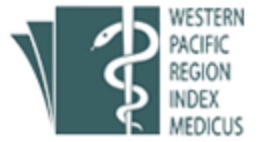Perception of Combined Team-Based Learning and Project-Based Learning among Undergraduate Medical Students: An Integration of Active Learning Strategies in Medical Education
DOI:
https://doi.org/10.31436/imjm.v24i01.2590Keywords:
team-based learning, project-based learning, IRAT, GRATAbstract
INTRODUCTION: Team-based learning (TBL) is an active learning session in small groups equipped with an instructional strategy giving students the opportunity to apply knowledge through various phases of activities. The phases are: i) pre-class preparation, ii) individual readiness assurance testing (IRAT) and group readiness assurance testing (GRAT), iii) immediate feedback, and iv) knowledge application phase. However, a 2-hour TBL session could be exhaustive. To address this issue and improve students’ enthusiasm towards self-learning process in TBL, project-based learning (PrBL) was incorporated in the final phase of TBL. This pilot study aimed to evaluate the perception of students on the implementation of combined TBL-PrBl in teaching and learning activity. TBL-PrBl also addresses the creativity element of the 21st century learning skills. MATERIALS AND METHODS: This cross-sectional pilot study was conducted among preclinical students enrolled in a Pathology course, involving 44 students. The research instrument was a validated questionnaire which assessed four key components in TBL namely; i) teamwork skills, ii) motivation, iii) subject-specific knowledge comprehension, and iv) overall satisfaction. RESULTS: Most students believed that TBL-PrBl improved teamwork, thinking skills, and enhanced understanding. 59.1% preferred TBL-PrBl over the didactic lecture, and 63.6% agreed that TBL-PrBl should be continued in the teaching and learning of Pathology. CONCLUSION: Based on the findings, TBL-PrBl has the potential to fulfil the 21st-century learning skills and fills in the gap of the limitation imposed by the traditional TBL.
Downloads
Downloads
Published
How to Cite
Issue
Section
License
All material submitted for publication is assumed to be submitted exclusively to the IIUM Medical Journal Malaysia (IMJM) unless the contrary is stated. Manuscript decisions are based on a double-blinded peer review process. The Editor retains the right to determine the style and if necessary, edit and shorten any material accepted for publication.
IMJM retain copyright to all the articles published in the journal. All final ‘proof’ submissions must be accompanied by a completed Copyright Assignment Form, duly signed by all authors. The author(s) or copyright owner(s) irrevocably grant(s) to any third party, in advance and in perpetuity, the right to use, reproduce or disseminate the research article in its entirety or in part, in any format or medium, provided that no substantive errors are introduced in the process, proper attribution of authorship and correct citation details are given, and that the bibliographic details are not changed. If the article is reproduced or disseminated in part, this must be clearly and unequivocally indicated.










